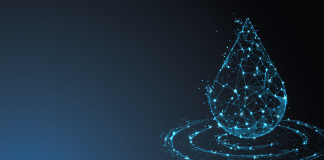Plumbing is one of the most under-appreciated inventions. Yet, plumbing ranks as one of the greatest innovations to benefit humankind, preceded only by inventions such as fire, the wheel, agriculture, and the likes.
Plumbing was invented around 2000 BC and was commonly used by ancient Mycenaeans and Romans. Following the collapse of the Roman Empire and leading into the Dark Ages, the concept of plumbing was forgotten, and its use was virtually non-existent. However, with the European Renaissance, plumbing and its benefits were rediscovered and major cities across Europe began to build plumbing infrastructure.
Over the centuries, there were improvements in plumbing systems — better components, attention to minimizing cross-connections and contamination, and improvements to water quality are some examples of the advances. However, throughout its history, plumbing remained a collection of simple pipes and mechanical devices to control the flow of water. Gravity was the principle driving force to make these systems work, as pressurized water supply systems were introduced at the turn of the last century. The devices and system as designed were very utilitarian.
Plumbing of the 21st century is very different from that of the past. Granted, the trends of change where present prior to the year 2000, but the rate of change has been accelerating in recent years. The sophistication of design is directly related to the changing expectations of the end user. Generational changes in the market are contributing to the changing demand. Plumbing has become a statement of style with multiple features — use of new finishes and stylistic shapes are the practice, not the exception.
Popular features include touchless faucets, voice activation, audio systems, mood lighting, and waterless or water conservation aspects. The DIY market has also grown. Products with features to serve this market, such as sweatless piping systems and push-fit connections, are commonly found at your local hardware store.
The plumbing industry is, like many others, becoming high-tech. Home tech, in fact, is a $14 billion industry. Plumbing manufacturers and engineers understand this and are responding to market forces.
Personal electronics have become a tool to complement plumbing products and system designs, and fully interconnected home systems can interact with plumbing systems. Devices such as shower valves can automatically set temperatures and spray modes for specific individuals. The integrated system can alert the homeowner of adverse conditions, such as constantly running water closets or breaks/leaks in pipes. If need be, the smart home can shut valves to isolate water sources.
Mechanical devices, which are an integral part of any plumbing system, are being replaced with electronic control devices. The use of electronics makes designing additional features and home system interfacing easier. Often, electronic controls have the advantage of being able to control to tighter tolerances.
Specific standards have been written for the electronic devices, which are becoming ever more prevalent. Examples would be ASSE 1082, Water Heaters with Integral Temperature Control Devices for Hot Water Distribution Systems; ASSE 1084, Water Heaters with Temperature Limiting Capacity; and ASSE 1085, Water Heaters for Emergency Equipment. Electronic control requirements are even being written into the new revisions of existing standards. ASSE 1017, Temperature Actuated Mixing Valves for Hot Water Distribution Systems, which is in the process of being revised, will possibly include a section for electronically controlled devices.
Closely associated with electronic devices are WiFi capable products and devices that deliver on-demand hot water. The need for a centralized hot water tank no longer exists. The incorporation of WiFi and smart technology in the plumbing system has led to the development of smart meters, which can send data to the utility for billing (no need for meter readers), shut the system down in emergencies, and monitor use patterns and make suggestions or changes based on the self-generated data.
All of these changes are not without challenges. As new and sophisticated technologies roll out, there is a need to educate the consumer. Rapid changes in technology puts demands on designers to be diligent of new opportunities and threats. Adding to these changes are the fickle and fluctuating demands of customers, regulators, and distributors. The internet connectivity makes for easy access to new markets, but also opens market access to competitors that would normally not have easy access. With the internet comes a broad reach in communications; however, media reviews and customer ratings, including dissatisfaction, need to be monitored and managed.
Advancing technologies will continue to be a factor in the evolution of plumbing. Tech savvy end users will continue to drive the change. Increasing demands for water quality, water conservation, and uses of reclaimed water will continue to be important aspects of the plumbing industry. This is an exciting time to be a participant in the plumbing industry. Those who can manage to address change and grasp new technologies will be the ones who are most successful.
Article by Terry Burger first appeared in Working Pressure magazine
Last modified: August 30, 2021

